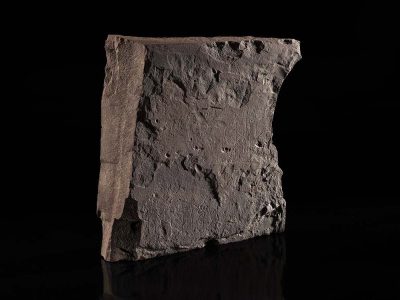It may look look like scribbles to the untrained eye, but the figures found etched on this piece of stone found in southern Norway thrilled archaeologists at the University of Oslo. A “new” rune stone had been uncovered, and turned out to be the world’s oldest, providing evidence of people living by the Tyri Fjord as long as 2,000 years ago.

The figures inscribed on reddish-brown sandstone in Ringerike are an ancient form of Nordic language that later evolved into the various forms spoken today. The runic writing is believed to be the name of a person buried in a grave where the stone was found, at Svingerud not far from the historic Hole Church south of Hønefoss. It dates from around 1200 and still features similar light-brown stone.
The archaeologists were digging in the area where the state has long had controversial plans to build a new train line called Ringeriksbanen, aimed at shortening the trip between Oslo and Bergen. Such excavations are common before any construction starts, and those working on the project got a big surprise in the autumn of 2021.

They found a relatively small block of stone, measuring 31x32cm, with the main inscription in the bottom left corner. The stone was lying in a grave that also revealed burned bones and charcoal that have since been dated back to the years 1-250AD. That makes it the earliest known rune stone ever found, according to a press release from the University of Oslo’s Museum of Cultural History.
“It means that some stood near the Tyri Fjord sometime around 2,000 years ago and carved runes into stone,” Professor Kristel Zilmer, a “runolog” at the museum, told Norwegian Broadcasting (NRK) on Tuesday. She called the stone “incredibly educational and inspiring.”
‘Very surprised’
Project leader Steinar Solheim said the team of archaeologists were “very surprised” by the discovery of the stone. “You nearly stop breathing and are amazed when you understand what you’re looking at.” The stone and a few smaller ones that include the word “rune” were found in 2021 and 2022, but were kept secret until researchers could date them. It took time to analyze the stones and some still aren’t dated, but the main stone now called “The Svingerud Stone” will go on display at the Museum of Cultural History (Kulturhistorisk museum) in Oslo from January 21.
Zilmer thinks their discovery can mean that rune stones are even older than researchers thought. The inscription appears to be a blend of various runic script, and includes some never seen before. NRK reported that researchers think it functioned like a gravestone, as a memorial to the person buried there who may have been a woman named “Idibera” or something similar. The actual runes have been translated into Latin letters to spell “idiberug” but that can reflect the family name.
Interpreting other runic messages on the stones present a challenge, according to the museum, because of variations in runic inscriptions carved until the Viking Age and Middle Ages.
NewsinEnglish.no/Nina Berglund

